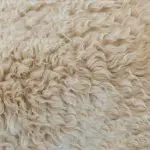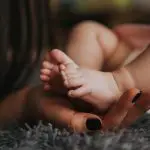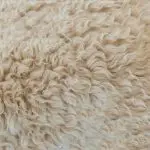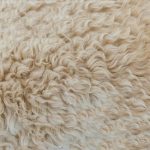If you share your home with dogs or cats, choosing the right upholstery fabric is essential. You need something that can handle scratches, shed fur, and occasional spills without losing its appeal. Not all fabrics are created equal when it comes to durability and ease of cleaning. Understanding which materials stand up best to pet wear and tear can save you time and frustration down the line—so what options give you the toughest, most practical choices?
Table of Contents
Key Takeaways
- Microfiber upholstery resists scratches, repels stains, dries quickly, and prevents deep pet hair embedding, making it ideal for homes with dogs and cats.
- Leather offers natural toughness and durable finishes that resist wear, scratches, and spills, aging beautifully with proper care.
- Synthetic blend fabrics repel stains and odors, are easy to clean, and often feature machine-washable covers for convenient maintenance.
- Tightly woven fabrics prevent pet hair embedding and allergen buildup, improving indoor air quality and maintaining cleaner furniture.
- High-rub count fabrics (above 30,000 cycles) provide superior durability against pet wear, reducing the need for frequent furniture replacements.
Benefits of Microfiber for Pet-Friendly Upholstery
Although pets can be tough on furniture, microfiber offers a resilient solution that stands up to daily wear and tear.
When you choose microfiber, you’re investing in pet friendly options that resist scratches and repel stains, making cleanup easier than ever.
The microfiber benefits don’t stop there—it’s tightly woven, so pet hair doesn’t embed deeply, allowing you to quickly vacuum or brush it off.
Plus, microfiber dries fast if your pet has an accident, preventing odors and damage.
You’ll appreciate how this fabric maintains its color and texture, even with active pets jumping on and off.
If you want durable upholstery that keeps your home looking fresh while handling the challenges pets bring, microfiber is definitely worth considering.
Leather Upholstery: Longevity and Scratch Resistance
When you want upholstery that combines durability with a sleek look, leather stands out as a top choice. Its natural toughness resists wear and tear, making it ideal for homes with dogs and cats.
Leather’s durable finishes help protect against scratches and spills, so you won’t worry about your pets’ claws damaging the surface. Plus, leather ages beautifully, developing a unique patina over time that adds character.
You also get a range of color options, from classic browns to modern grays, allowing you to match your décor effortlessly.
Just remember that while leather withstands scratches better than many fabrics, it’s not entirely scratch-proof. Regular cleaning and conditioning will keep your leather upholstery looking great and extend its lifespan in a busy pet home.
Advantages of Synthetic Blends in Pet Homes
When you choose synthetic blends for your upholstery, you get fabrics that resist stains and odors, making them perfect for pet homes.
They’re also easy to clean, so you won’t spend hours scrubbing after every accident.
This combination keeps your furniture looking fresh and your home smelling clean.
Stain and Odor Resistance
Since pets can be messy, choosing upholstery fabric with stain and odor resistance is essential for maintaining a fresh and clean home. Synthetic blends excel in repelling stains and controlling odors, helping you keep your furniture looking and smelling great despite pet mishaps. These fabrics resist spills and prevent odors from settling deep into the fibers.
| Fabric Type | Stain Resistance | Odor Control |
|---|---|---|
| Polyester Blend | High | Excellent |
| Nylon Blend | Medium | Good |
| Olefin Blend | High | Very Good |
| Microfiber | Very High | Excellent |
| Acrylic Blend | Medium | Moderate |
Easy Maintenance and Cleaning
Beyond resisting stains and odors, synthetic blends make cleaning and upkeep straightforward for pet owners.
You’ll find these fabrics require less effort to maintain, saving you time and frustration.
Here are three cleaning techniques and maintenance tips to keep your upholstery looking fresh:
- Regular Vacuuming: Quickly removes pet hair and dirt before they embed into fibers.
- Spot Cleaning: Use mild detergents and a soft cloth to address spills immediately, preventing stains.
- Machine-Washable Covers: Many synthetic blends come with removable covers, letting you wash them easily without damage.
Tightly Woven Fabrics as a Barrier to Fur and Allergens
Although pets bring joy to your home, their fur and allergens can quickly become a challenge to manage. Choosing tightly woven fabrics helps you create an effective barrier against pet hair and allergens.
Fabrics testing shows that materials with a dense weave prevent fur from embedding deeply, making it easier to clean and reducing allergen buildup. These allergen barriers are especially beneficial if someone in your household has sensitivities.
When selecting upholstery, look for fabrics labeled as tightly woven or high-density weaves. This not only keeps your furniture looking cleaner but also improves indoor air quality by limiting allergen transfer.
High-Rub Count Fabrics for Enhanced Durability
You’ll want to check the rub count when choosing upholstery fabric, as it measures how much wear the material can handle.
High-rub count fabrics stand up better to your pets’ claws and daily activity, keeping your furniture looking fresh longer.
Picking these durable options means less damage and fewer replacements over time.
Understanding Rub Count
Rub count measures how many times a fabric can withstand abrasion before showing wear, and it’s a key factor when choosing durable upholstery for homes with pets.
Understanding rub count significance helps you pick fabrics that stand up to your dog’s claws or your cat’s playful paws. Higher rub counts mean better fabric durability and longer-lasting furniture.
When evaluating rub count, consider these points:
- Measurement Standard – Rub count is tested using the Martindale or Wyzenbeek method, indicating cycles of abrasion resistance.
- Recommended Range – For pet-friendly homes, look for fabrics with a rub count above 30,000 cycles to guarantee durability.
- Impact on Fabric Choice – Higher rub counts usually mean tougher fabrics, ideal for resisting wear from pets.
Knowing rub count helps you invest in upholstery that lasts.
Benefits for Pet Homes
When you choose high-rub count fabrics for your upholstery, you’re investing in materials that hold up exceptionally well against the daily wear and tear pets bring.
Durable textiles resist scratches, claw marks, and frequent rubbing, so your furniture stays looking fresh longer. Plus, these pet friendly designs often feature tightly woven fibers that prevent fur from embedding deeply, making cleaning easier.
You’ll appreciate how these fabrics withstand jumping, scratching, and even occasional accidents without compromising style or comfort.
By selecting upholstery with enhanced durability, you reduce the need for frequent replacements or repairs, saving time and money.
Ultimately, high-rub count fabrics help create a welcoming, long-lasting environment for both you and your furry companions.
Performance Fabrics Offering Advanced Protection
Performance fabrics combine innovative technology with sturdy materials to give your upholstery superior resistance against pet-related wear and tear.
When exploring performance characteristics, you’ll notice these fabrics excel in durability, stain resistance, and easy cleaning—key factors for homes with dogs and cats. Comparing fabrics helps you choose the best fit for your lifestyle and pets.
Here are three standout benefits of performance fabrics:
- Enhanced Durability: Engineered to withstand scratches and frequent use without losing integrity.
- Advanced Stain Resistance: Treated to repel liquids and prevent odors, making accidents less stressful.
- Easy Maintenance: Designed for quick cleaning, so pet hair and dirt don’t settle in fibers.
Frequently Asked Questions
How Do Different Upholstery Fabrics Impact Indoor Air Quality With Pets?
Imagine your upholstery as a filter—when you pick breathable fabric, you’re letting air flow and reducing trapped pet dander. You’ll notice fresher indoor air, making your home healthier and more comfortable for everyone, pets included.
What Fabric Colors Best Hide Pet Hair and Stains?
You’ll want to pick color trends like medium grays, browns, or patterned fabrics to best hide pet hair and stains. These shades offer natural stain resistance and blend fur, keeping your upholstery looking cleaner longer.
Are Any Upholstery Fabrics Hypoallergenic for Sensitive Pet Owners?
Like a refreshing change, hypoallergenic options with fabric treatments reduce allergens, making your home safer for sensitive pet owners. You’ll find materials designed to minimize reactions while keeping comfort and style intact.
How Do Pet Behaviors Influence Fabric Wear and Tear Over Time?
Your pets’ scratching habits and chewing tendencies directly impact fabric wear and tear over time. You’ll notice more damage if they frequently claw or bite, so choosing tough, resilient materials helps your upholstery last longer despite their behavior.
What Maintenance Routines Best Extend Upholstery Life With Pets?
Start by swiftly sweeping stray strands and spills. You’ll want regular cleaning techniques and fabric treatment to fight fuzz and fade. Don’t delay—dedicate daily diligence to defend your durable decor from damage.
- Understanding Fabric Price in Bangladesh: A Comprehensive Cost Guide - June 20, 2025
- Denim Fabric Manufacturers in Bangladesh: A Complete 2024 List - June 20, 2025
- The Ultimate Guide to Fabric Manufacturers in Bangladesh - June 20, 2025







